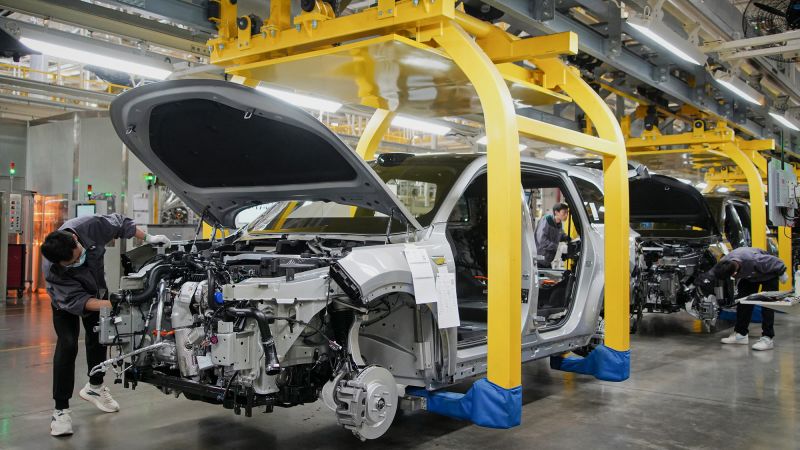Global electric vehicle sales are projected to increase by more than 20% to 17 million this year, with significant growth driven by drivers in China, according to the International Energy Agency. The surge in demand for electric vehicles is expected to reshape the global auto industry and reduce oil consumption for road transport, with the IEA anticipating that half of all cars sold globally will be electric by 2035. This optimistic outlook is contingent on the development of charging infrastructure to keep pace with the growing demand for EVs.
Despite the positive long-term forecast for electric vehicles, some automakers are experiencing financial pressure due to price wars and competition intensifying in the market. Tesla, the world’s largest EV maker, recently reduced prices in major markets to maintain sales momentum amidst growing competition from Chinese competitors and traditional automakers. However, the global EV revolution appears to be entering a new phase of growth, according to the IEA’s executive director, Fatih Birol, highlighting the continued momentum behind electric cars.
Automakers play a crucial role in increasing EV adoption worldwide, with affordability being a key factor influencing consumers’ decision to switch to electric vehicles. In China, over 60% of EVs sold last year were priced lower than conventional cars, compared to Europe and the United States where internal combustion engine cars remain more affordable. The IEA expects intensified market competition and advancements in battery technology to drive down EV prices in the coming years, making them more accessible to a wider range of consumers.
Concerns about the influx of Chinese EV imports have led the European Union to investigate state support for EV manufacturers in China, as the auto industry is a major employer and economic driver in Europe. In China, EV sales are expected to make up nearly 60% of the global total this year and around 45% of all car sales in the country. By 2030, one in three vehicles on Chinese roads is projected to be electric, compared to one in five in the United States and the European Union.
The transition to electric vehicles is set to have significant implications for both the auto industry and the energy sector, with the number of public EV charging points worldwide expected to increase to 15 million by 2030, a substantial rise from last year. Policy support and careful planning are essential to ensure that the growing demand for electricity from charging stations does not strain electricity grids. As the EV market continues to evolve and expand, collaboration between governments, automakers, and energy providers will be crucial in supporting the transition to a cleaner and more sustainable transportation system.
Overall, the outlook for electric vehicles remains positive, with the potential for continued growth and transformation in the global auto industry. Despite challenges such as price competition and market dynamics, the increasing affordability and availability of electric vehicles, combined with supportive government policies and infrastructure development, are expected to drive the widespread adoption of EVs in the coming years. The shift towards electric mobility not only presents economic opportunities for automakers and energy providers but also contributes to reducing emissions and improving air quality for a more sustainable future.


